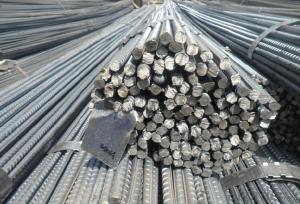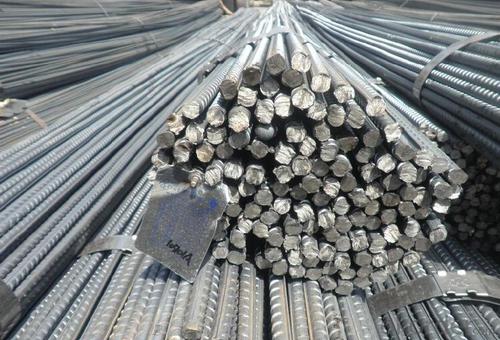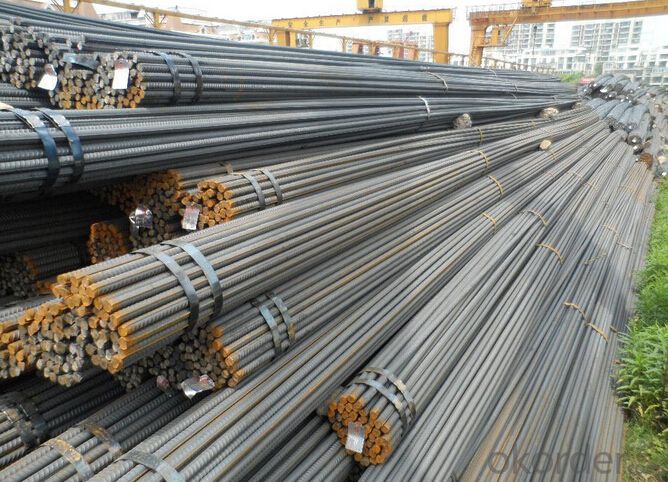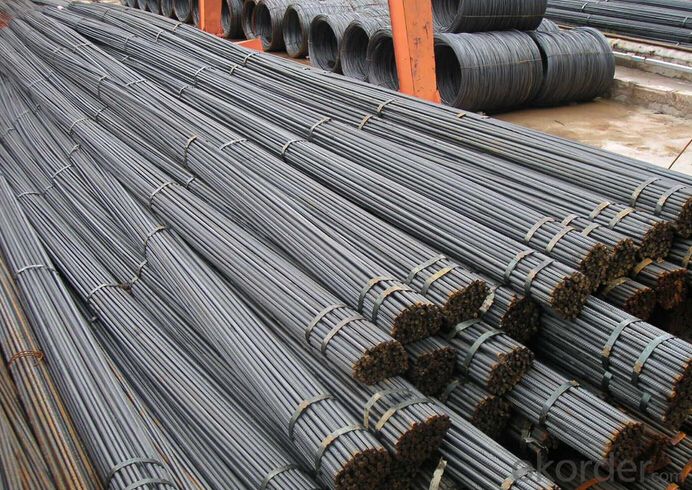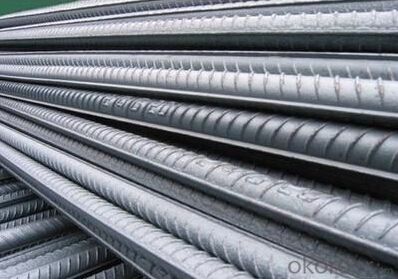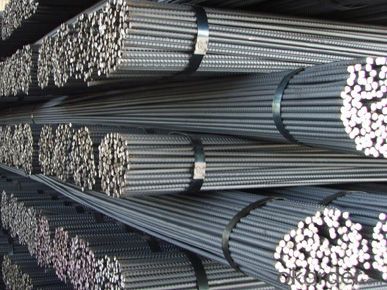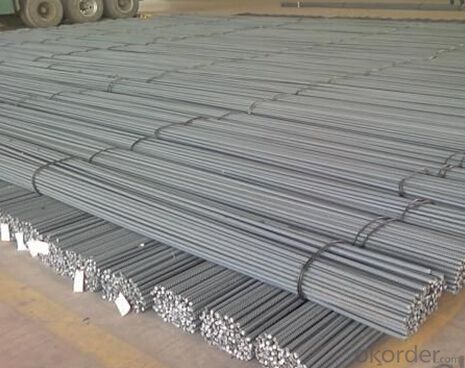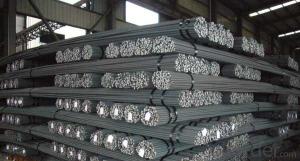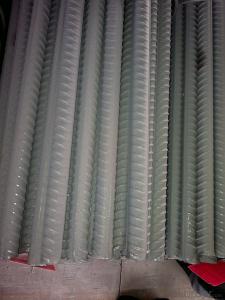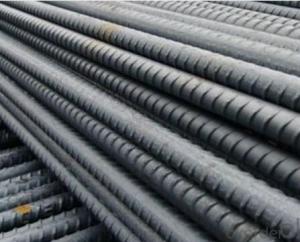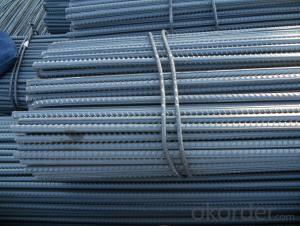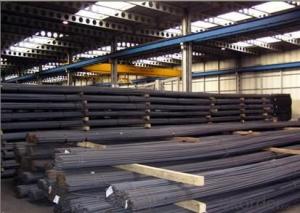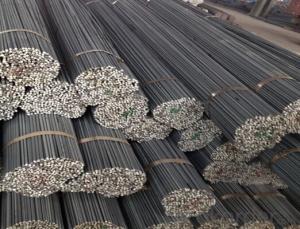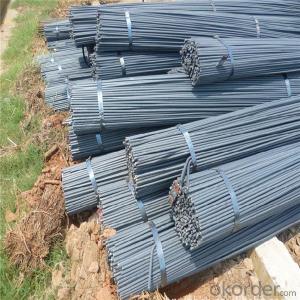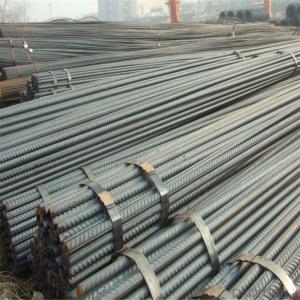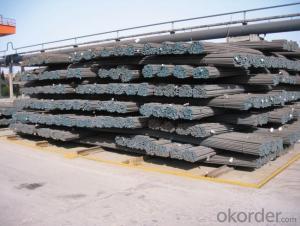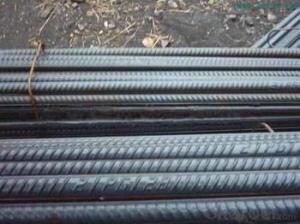ASTM A615/BS4449 Standard Deformed Steel Rebars
- Loading Port:
- Tianjin
- Payment Terms:
- TT OR LC
- Min Order Qty:
- 100 m.t.
- Supply Capability:
- 10000 m.t./month
OKorder Service Pledge
Quality Product, Order Online Tracking, Timely Delivery
OKorder Financial Service
Credit Rating, Credit Services, Credit Purchasing
You Might Also Like
Specification
Standard:
AISI,ASTM,JIS,GB,BS,DIN,API,EN
Technique:
Hot Rolled,Cold Rolled,Cold Drawn,ERW,Forged,Saw,Extruded,EFW,Spring
Shape:
U Channel,Square,C Channel,Hexagonal,Round,Rectangular,Oval,LTZ
Surface Treatment:
Galvanized,Coated,Copper Coated,Color Coated,Oiled,Dry,Chromed Passivation,Polished,Bright,Black,PVDF Coated
Steel Grade:
Q195,Q215,Q235,Q215B,Q235B,RHB335,HRB400,200 Series,300 Series,400 Series,600 Series,SS400-SS490,10#,20#,A53(A,B)
Certification:
UL,BSI,ISO,SGS,BV,IBR,RoHS,CE,API
Thickness:
8-40
Length:
12
Net Weight:
10
ASTM A615/BS4449 Standard Deformed Steel Rebars
Details of ASTM A615/BS4449 Standard Deformed Steel Rebars
| Standard & Grade: | GB1499-98 : HRB335,HRB400,HRB500 |
| BS4449-1997 : GR460,GR500 | |
| CAN/CSA-G30.18-M92 : 400W | |
| ASTM A615 : Gr.40, Gr.60 | |
| Diameter: | 6mm;8mm;10mm;12mm;14mm;16mm;18mm;20mm;22mm;25mm;28mm;30mm;32mm;35mm;40mm |
| Length: | 6m,9m,12m |
| Packing: | Bundle packing |
| Origin: | China |
| Application: | Construction,Road,Machinery processing,Welding fields. |
| Delivery time: | 10-25 days |
| Shipment: | By bulk vessel or Container |
| Documents: | Mill Test Certificate,Commercial Invoice,Packing List,Certificate of Origin |
Company Introduction of the ASTM A615/BS4449 Standard Deformed Steel Rebars
CNBM International Corporation is the most import and export platform of CNBM group(China National Building Material Group Corporation) ,which is a state-owned enterprise, ranked in 270th of Fortune Global 500 in 2015.
With its advantages, CNBM International are mainly concentrate on Cement, Glass, Iron and Steel, Ceramics industries and devotes herself for supplying high quality series of refractories as well as technical consultancies and logistics solution.
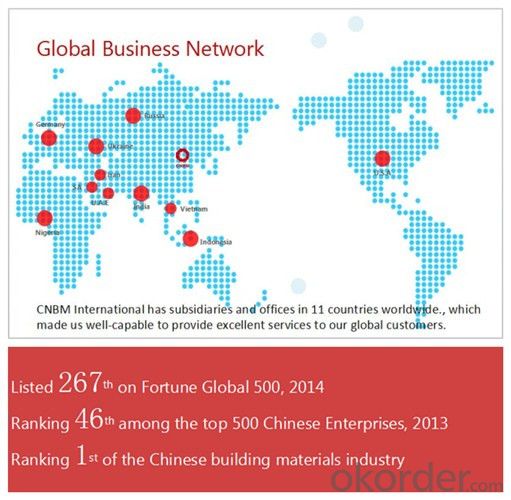
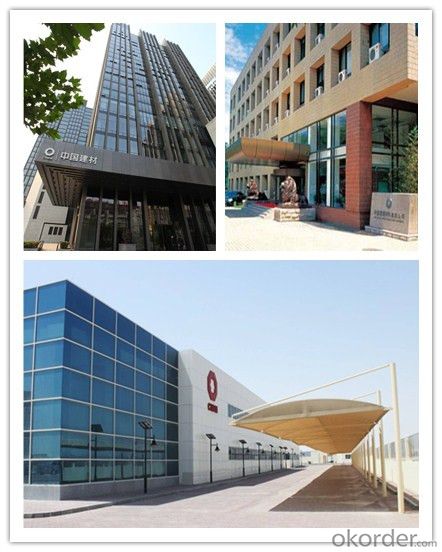
Packaging & Delivery of the ASTM A615/BS4449 Standard Deformed Steel Rebars
| Packaging Detail | Sea worthy packing /as per customer's packing instruction |
| Delivery Detail | 15 ~ 40 days after receiving the deposit |
FAQ
| Are you a trading company or manufacturer? | Manufacturer |
| What’s the MOQ? | 1000m2 |
| What’s your delivery time? | 15-20 days after downpayment received |
| Do you Accept OEM service? | Yes |
| what’s your delivery terms? | FOB/CFR/CIF |
| What's the Payment Terms? | 30% as deposit,70% before shipment by T/T |
| Western Union acceptable for small amount. | |
| L/C acceptable for large amount. | |
| Scrow ,Paybal,Alipay are also ok | |
| Why choose us? | Chose happens because of quality, then price, We can give you both. Additionally, we can also offer professional products inquiry, products knowledge train (for agents), smooth goods delivery, excellent customer solution proposals. |
| What's your available port of Shipment? | Main Port, China |
| What’s your featured services? | Our service formula: good quality+ good price+ good service=customer's trust |
| Where are your Market? | Covering more than 160 countries in the world |
- Q: How do steel rebars affect the overall durability of marine structures?
- Enhancing the overall durability of marine structures, steel rebars play a vital role. The high tensile strength and corrosion resistance of these rebars ensure structural stability and prevent degradation caused by saltwater, waves, and harsh weather conditions. Corrosion is a major challenge faced by marine structures due to constant exposure to saltwater, weakening the structure over time. To combat this, steel rebars are often coated with anti-corrosive materials like epoxy or galvanized coatings. These coatings act as a protective layer, preventing the penetration of saltwater and other corrosive agents, ensuring the longevity of the marine structure. In addition to corrosion resistance, steel rebars are known for their high tensile strength, allowing them to withstand the tremendous forces of waves and currents. They reinforce the concrete used in marine structures, preventing cracks or failure under excessive loads. This reinforcement enhances the structural integrity of the marine structure, making it more resilient against external forces. Moreover, steel rebars offer flexibility in design and construction, allowing for the creation of complex and robust marine structures. Engineers can bend and shape the rebars as needed, designing structures that can better withstand the unique challenges of the marine environment. This flexibility also streamlines the construction process, making it more efficient and cost-effective. Overall, steel rebars make a significant contribution to the durability of marine structures by providing corrosion resistance, enhancing structural stability, and enabling innovative design solutions. Their presence ensures the longevity and reliability of marine structures, enabling them to withstand the harsh conditions of the marine environment for extended periods.
- Q: What are the different types of steel rebars used in column reinforcement?
- There are several types of steel rebars used in column reinforcement, including mild steel rebars, high-strength rebars, epoxy-coated rebars, and stainless steel rebars.
- Q: How are steel rebars protected from fire damage?
- Steel rebars are protected from fire damage through various methods. One commonly used method is the application of fire-resistant coatings. These coatings are specifically designed to withstand high temperatures and prevent the steel from reaching its critical temperature, which is when it starts to lose its structural integrity. Another method is the use of fire-resistant concrete encasement. In this method, the rebars are embedded within a layer of concrete that has been specifically designed to resist fire. This concrete acts as a barrier, preventing the heat from directly reaching the steel rebars and thus protecting them from fire damage. Additionally, fire-resistant wraps or blankets can be used to provide temporary protection to steel rebars during construction. These wraps are made from fire-resistant materials and are applied directly to the rebars, creating a barrier that prevents direct exposure to fire. It is important to note that the level of fire protection required for steel rebars depends on the specific building codes and regulations in place. These codes typically specify the minimum fire resistance rating that must be achieved for structural elements, including rebars, in order to ensure the safety of the building and its occupants.
- Q: How do steel rebars contribute to the overall structural integrity of a building?
- Steel rebars, also known as reinforcement bars, play a crucial role in enhancing the overall structural integrity of a building. They are embedded within concrete structures to provide tensile strength, which complements the compressive strength of the concrete. By resisting tension forces, steel rebars help prevent cracks and failure in the concrete, ensuring the structural stability and durability of the building.
- Q: How many patterns are there in threaded steel?
- According to the shape of steel ribs, there are three kinds of patterns: herringbone spiral and crescent shaped patternSteel is commonly known as hot rolled ribbed bar, belonging to the small steel steel, mainly used for steel reinforced concrete structure frame. In use, some mechanical strength, bending deformation property and welding performance are required. The raw steel billet for the production of threaded steel is carbon structural steel or low alloy structural steel which is treated by calm melting, and the finished steel bar is delivered in hot rolling forming, normalizing or hot rolling state.
- Q: How do steel rebars resist shear forces in concrete structures?
- Shear forces in concrete structures are counteracted and reinforced by steel rebars. These rebars play a crucial role in enhancing the concrete's strength and stability. They are strategically placed in areas where high shear forces are expected, such as beams, columns, and slabs. By forming a crisscross pattern, the rebars create a grid-like structure within the concrete. When shear forces act on the concrete, the rebars resist cracking and separation by transferring the load across the cracks. Acting as tension reinforcement, the rebars provide extra strength, preventing the concrete from failing. Additionally, they distribute the shear forces evenly, reducing stress concentration and increasing the overall structural integrity. The bond between the steel rebars and the concrete is vital for their effective resistance against shear forces. The rebars are designed with ridges or deformations on their surface to improve the bond strength. This bond ensures that the rebars and the concrete work together as a unified unit, facilitating the transfer of shear forces from the concrete to the rebars. To summarize, steel rebars reinforce concrete structures by strengthening and distributing shear forces more effectively. They prevent cracking and failure, enhance the structural integrity, and ensure overall stability.
- Q: The difference between round face and round bar steel on concrete
- 1., the thread of steel thread, round steel is not, is flat2. commonly used round steel materials are generally Q235 and HPB300, thread steel is HRB400, yield strength is not the same3. generally, thread steel is more expensive than round steel
- Q: What are the different types of steel rebars used in elevated highways?
- Steel rebars commonly used in elevated highways vary in type, each with its own strength and durability. These rebars serve to provide structural support and reinforcement to the concrete structures found on highways. 1. Mild Steel Rebars, also known as black steel rebars, are the most frequently utilized type on elevated highways. They are made from carbon steel and possess a relatively low tensile strength. These rebars are cost-effective and offer adequate reinforcement for most highway structures. 2. High-strength Steel Rebars are manufactured using high-strength low-alloy (HSLA) steels, which boast higher tensile strength compared to mild steel rebars. They are employed in highway areas requiring additional strength and load-bearing capacity. High-strength steel rebars prove particularly advantageous in bridges and elevated structures subjected to heavy traffic or seismic activity. 3. Epoxy-coated Rebars enhance corrosion resistance by applying an epoxy coating to the steel surface. These rebars are commonly used in regions with high moisture exposure, such as coastal highways or areas with high humidity. The epoxy coating acts as a barrier between the steel and the external environment, preventing corrosion and extending the rebars' lifespan. 4. Galvanized Rebars, similar to epoxy-coated rebars, are also corrosion-resistant. However, instead of epoxy coating, they are coated with a layer of zinc. Galvanized rebars excel in their resistance to corrosion caused by harsh chemicals or saline environments. They are commonly found in coastal areas or regions with high pollution levels. 5. Stainless Steel Rebars are made from a corrosion-resistant alloy containing chromium and nickel. These rebars offer excellent resistance to corrosion, making them ideal for highly corrosive environments such as highways near chemical plants or industrial areas. Though more expensive, stainless steel rebars provide long-term durability and require minimal maintenance. It is crucial to consider the specific requirements and environmental conditions of the elevated highway project when selecting the appropriate steel rebars. Consulting with structural engineers and adhering to local building codes and regulations is essential to ensure the safety and longevity of the highway structures.
- Q: What are the advantages of using corrosion-resistant steel rebars?
- There are several advantages of using corrosion-resistant steel rebars in construction projects. Firstly, corrosion-resistant steel rebars offer enhanced durability and longevity. Regular steel rebars are prone to corrosion when exposed to moisture and chemicals, which can significantly reduce their lifespan. However, corrosion-resistant steel rebars are specifically designed to resist corrosion, ensuring a longer service life for the structure. This is particularly beneficial in environments with high humidity, coastal areas, or regions with high levels of pollution. Secondly, the use of corrosion-resistant steel rebars helps in maintaining the structural integrity of the building. Corrosion can weaken the rebars, leading to structural failures and safety hazards. By using corrosion-resistant steel rebars, the risk of corrosion-induced structural damage is minimized, ensuring the safety of the occupants and the overall stability of the structure. Additionally, the maintenance costs associated with corrosion-resistant steel rebars are significantly lower compared to regular steel rebars. Structures built with regular steel rebars require frequent inspections, repairs, and maintenance to prevent and address corrosion issues. However, corrosion-resistant steel rebars reduce the need for such maintenance, resulting in reduced costs over the lifespan of the structure. Furthermore, corrosion-resistant steel rebars offer increased flexibility in design and construction. The properties of these rebars allow for the construction of thinner and lighter structures without compromising on strength. This can lead to cost savings in terms of materials and construction time, making corrosion-resistant steel rebars a cost-effective solution. Lastly, the use of corrosion-resistant steel rebars contributes to sustainable construction practices. By increasing the lifespan of the structure and reducing the need for maintenance, the environmental impact of the construction project is minimized. Additionally, the use of these rebars can contribute to obtaining green building certifications, promoting sustainable and environmentally-friendly construction practices. In conclusion, the advantages of using corrosion-resistant steel rebars include enhanced durability, improved structural integrity, reduced maintenance costs, increased design flexibility, and promoting sustainable construction practices.
- Q: Can steel rebars be used in the construction of offshore platforms?
- Yes, steel rebars can be used in the construction of offshore platforms. Steel rebars are commonly used as reinforcement in concrete structures, providing strength and stability. In the construction of offshore platforms, where durability and resistance to harsh environmental conditions are crucial, steel rebars are often preferred due to their high tensile strength, corrosion resistance, and ability to withstand extreme loads and pressures.
Send your message to us
ASTM A615/BS4449 Standard Deformed Steel Rebars
- Loading Port:
- Tianjin
- Payment Terms:
- TT OR LC
- Min Order Qty:
- 100 m.t.
- Supply Capability:
- 10000 m.t./month
OKorder Service Pledge
Quality Product, Order Online Tracking, Timely Delivery
OKorder Financial Service
Credit Rating, Credit Services, Credit Purchasing
Similar products
Hot products
Hot Searches
Related keywords
